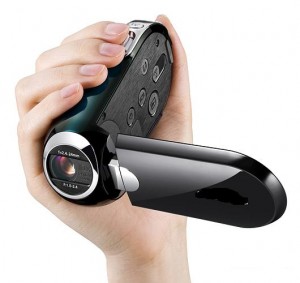 Well, it’s getting to be that time of year when folks are bringing in their camcorders to have all those pesky files watchable. They’ve learned that while having these small little hard drive camcorders is awesome to shoot with and is great in capturing all those memories, it is a HUGE pain in the butt actually being able to watch them. Sure you can use the cables and run them from the camera into the TV but really, who wants to do that? And getting a DVD of all this material is one of those “don’t try this at home” moments.
Well, it’s getting to be that time of year when folks are bringing in their camcorders to have all those pesky files watchable. They’ve learned that while having these small little hard drive camcorders is awesome to shoot with and is great in capturing all those memories, it is a HUGE pain in the butt actually being able to watch them. Sure you can use the cables and run them from the camera into the TV but really, who wants to do that? And getting a DVD of all this material is one of those “don’t try this at home” moments.
So, a couple little pointers to keep in mind:
First, if you have a relatively new camera most likely you’re shooting your videos in “HIIIIIGH DEFINITION” (echo voice optional) and if you have been wise enough, Young Jedi, to own a Blu-Ray player make sure you keep your material in “HIIIGH DEFINITION” (echo voice not optional this time…I’m serious.) Ya see, when you want to see all that great footage of your kids at Disneyland or birthdays or Christmas or those moments you forgot to turn off the camera so you have 20 minutes of the ceiling on a DVD, we need to “down rez” the camera files. Technically we’re going from a file that has a resolution of 1920 lines by 1080 lines down to 720 lines by 480 lines. But why, Michael? Well, because a regular DVD is designed to BE that smaller resolution. That’s why when high def came out people we’re all like, “Oh…my…God, Becky look at her resolution! I like big screens, I cannot lie, the other brothers can’t deny…” Sorry, off a tangent there.
ANYHOW, what I’m saying is, leave your files in high def by asking for, and receiving a BLU-RAY disc. The whole purpose is to get as much detail of that ceiling shot as you can get, right? And that’s what we can help you with.
Second thing to keep in mind, if your camera is NOT high definition, but a standard def, and you have gigs upon gigs of files, here’s a little tip to let you know how many discs you could be looking at as an end result. It’s basic math. Just plug your camera into your computer using the USB cable and open up the camera’s folders in an Explorer window (if you’re using a Mac…go find a PC. I hate Macs.)* Once you find the files look at one of it’s sizes. It should say something like 5,000 or 50,000, or 6,000,000 and all these numbers are just bytes of information. It’s all a factor of 10 meaning 5,000 bytes equals 5 Megabytes, 50,000 bytes equals 50 Megabytes, 6,000,000 bytes equals 6 Gigabytes, etc. So look at one file and just play it (usually just double-click on it) and see how long in time that one file is. If you see that you have a 1 minute clip that is 100 Megabytes in size you can extrapolate the estimated length of time of ALL your files. Once you’ve determined how long a clip is in relation to its size just look at how much file space you’re using on your camera (just right-click on the drive letter your camera has been designated and select properties, that will tell you how much space is being used) and if it says you are using 10 Gigs of space you can figure that 100 Megabytes=1 minute so 1000 Megabytes (or 1 Gigabyte)=10 minutes and therefore 10,000 Megabytes (or 10 Gigabytes)=100 minutes or 1 hour 40 minutes. Plenty of room to fit on one standard DVD (which typically holds 2 hours.)
Now all cameras are a bit different in how they store information so you may have a bunch of wonky numbers like 76,994 bytes equalling 14 seconds, but the math basics are still the same. Personally, I try to find the closest file size to an even 100 Megs to figure out an approximate length of time for all the movies, but that’s because I’m lazy and 100 is a nice number.
In conclusion, we at Patchin Pictures want you to be able to watch your stuff whenever your want (keep high def) And because of this we’re willing to figure out (keep high def) what your needs may be in getting the most out of all the work you’ve (keep high def) put into capturing all those moments you don’t want to forget (don’t forget in high def.)
If you have ANY questions about these little tips, go ahead and call us at Patchin Pictures 702-240-6777 and ask for “that guy that wrote that blog thing about my camera stuff.” We’ll know what you mean.
*this is all dependent on whether you’ve changed recording speed during your video shooting spree. If you changed speeds, then the math will be different. So stop it and shoot the same way all the time.
